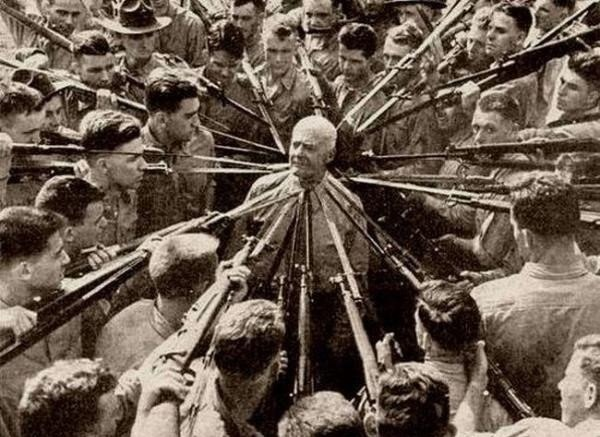Character Armor: What Is It?
The foundational concept for body-oriented psychotherapists is the term character armor. Here, “character” refers to a personality shaped by neurotic patterns. In fact, to some degree, we are all neurotic—this is a basic idea in all forms of psychotherapy.
It’s believed that depressive and withdrawn neurotics have very low energy levels. So, where does their bioenergy go, the energy we all receive from air, sunlight, and food? Depressive, withdrawn neurotics spend all their available energy maintaining their armor.
In general, armor is a virtual concept. It refers to the learned habit of activating psychological defense mechanisms. The purpose of this defense is to isolate the person from painful feelings, thoughts, or events.
However, over time, this virtual armor becomes very real. It manifests as muscle tension, chronic tightness, and restricted breathing. Every muscle group, even those we’re not aware of, becomes chronically tense. This disrupts healthy body functioning and eventually harms our internal organs.
Energy, Sexuality, and the Body
Humans actually have an abundance of energy. When too much energy accumulates, it creates sexual tension, which is released through orgasm. Neurotics, however, use all their energy to maintain muscle tension, which kills their sexuality. The result is a diagnosis of anorgasmia—partial or complete inability to experience orgasm.
The simplest remedy for someone experiencing depression, surprisingly, is to establish a strict routine for eating and sleeping. Meals can be two, three, or five times a day, and sleep can last 6, 8, or even 12 hours, but it must be regular.
How does this relate to the body? Directly—while a routine doesn’t eliminate all muscle tension, it gives the exhausted body the rest it needs, which a perpetually tense system never allows.
Rediscovering Pleasure and the Body
The next step is teaching the person to experience pleasure, returning them to their natural state. Genuine pleasure is considered a person’s primary nature, suppressed by societal prohibitions. Patients are encouraged to develop their ability to experience pleasure on their own—it’s simply explained as necessary for therapy.
People learn to enjoy life and, in turn, their own bodies. The root of the problem called “character armor” is tension, distrust, and a lack of love for one’s own body.
Physical liberation removes the alienation from the world and others that causes communication difficulties and social conflicts.
The conclusion is simple: if you have trouble relating to others, you likely have trouble accepting your own body, its reactions, and emotions.
How Character Armor Forms: The Example of Crying
The most common example of neurotic character formation and its armor is the prohibition against crying. This is often consciously instilled in boys by parents who believe “men shouldn’t cry.”
- Teeth clench
- Breathing is held
- Throat and abdominal muscles tense up
This is how “character armor” is built, making it impossible to freely express sadness, grief, compassion, or regret.
There’s a harmful rule in upbringing: if you can’t be something, at least appear to be. Appear strong (or, for girls, weak), as society expects. In other words, form a “character armor.” There’s even a saying: “forge your character.” Modern humanistic psychotherapy fights against this, with its main motto: To be, not to seem. To be, not to have.
Techniques for Releasing Muscle Armor
Many techniques are used to release muscle armor, including:
- Massage of problem areas
- Fencing—to express suppressed aggression (sometimes, people are simply allowed to hit a punching bag instead)
- Screaming—releases tension in the throat, abdomen, and shoulders
- Kicking and flailing—lying on a mat and acting like a wailing, unwrapped infant
- Grounding—standing on the ground until your legs tremble or walking “with your whole foot.” Neurotics often lose contact with the ground, and grounding techniques help restore it.
Types of Character Armor: Five Body Types
Body-oriented psychologists have identified five main types of character armor. See if you recognize yourself in any of these descriptions:
- Schizoid Armor
The schizoid type doesn’t feel their body at all. Movements are stiff, limbs move like a puppet’s, posture is slouched, facial expressions are minimal, arms hang, and feet shuffle. This person is always afraid, especially of death, and sees danger everywhere. Their armor locks up the entire spine, making movement difficult. Therapy focuses on developing fluidity and flexibility. - Oral Type Armor
The oral type is psychologically and physically underdeveloped, “stuck” at the infant stage. They have little body hair, long limbs and torso, and underdeveloped muscles—think of a childlike, adolescent, or “Twiggy” physique. They constantly crave perfect love and protection but can’t give love or care to others. Therapy aims to relax the shoulders, back, and especially the throat for easier breathing. - Psychopathic Type Armor
This type has an overdeveloped upper body, almost no buttocks, and tiny, thin legs. It’s the classic “boss behind a desk” look. Their main drive is to dominate and control others. - Masochistic Armor
The masochist has a flattened, heavy body and a neck that juts forward—like a chicken going to slaughter. They’re easily recognized in a crowd. Their main thought: “I’m afraid to make decisions; who can I submit to?” They have an energy block in the pelvic area and often can’t experience orgasm. - Rigid Type Armor
This type looks like a well-built, muscular person—think of Schwarzenegger as the Terminator. But they seem lifeless and mechanical, with energy that doesn’t circulate. Their inner mantra: “I control myself, I control myself, I cont…”



